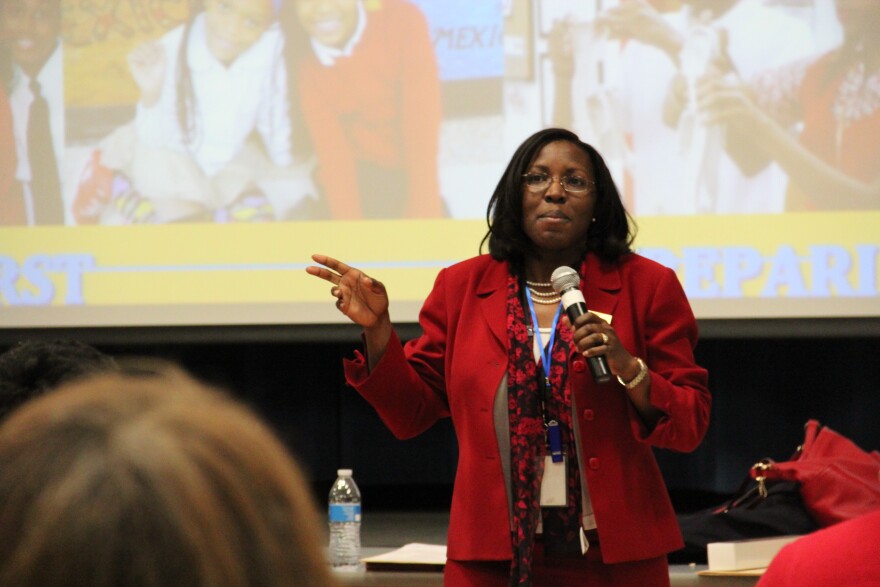The deep economic and racial divides in the St. Louis-area’s education system take a devastating toll on children and neighborhoods. But there are strategies that can help ensure all young people have an equal chance for success. This was a central theme during Tuesday night’s Ferguson Commission meeting on education inequality and child well being.
“Although we protest for fairness in the criminal justice system, the issue of fairness in the education system is the number one priority for me,” said Clifton Kinnie, a senior at Lutheran High School North who has helped organized demonstrations.
“Our current education system has become a ladder to systematic poverty,” he told the commission.
As with previous commission meetings, those in attendance were asked to form small working groups to brainstorm how to address deep-seated racial and economic inequalities.
Many ideas from the racially diverse crowd of more than 130 people at Westview Middle School in the Riverview Gardens School District focused heavily on addressing issues outside of the classroom. Some were direct, like ensuring all streets had adequate lighting and having more classes on parenting skills. Others were wide ranging and included using schools as hubs to provide social services, expanding extra-curricular programs and insisting that teachers, administrators and public officials be held to a higher standard when it comes to classroom performance.
“I am here to give you hope,” said Tiffany Anderson, superintendent of the Jennings School District during her presentation to the commission.
Jennings has become an example of how to move the academic needle in a low-income, majority African-American district. A little more than 90 percent of the north St. Louis County school system's 2,537 students qualify for free and reduced-price lunch.
“We have to make sure that our high poverty districts deserve the best,” Anderson said.
Jennings’ accreditation status was downgraded to provisionally accredited in 2008. After Anderson took over Jennings in 2012, the district’s marks on its state report card have steadily improved. Last year it scored 76.1 percent, clearing the 70 percent threshold for the full accreditation rage and a 19-percentage point improvement compared to the year before she took over. State school officials have said they want to see sustained progress this school year before returning the district’s full accreditation status.
“You cannot use money or resources as an excuse or you will never succeed at a high level,” Anderson said.
To that point, she said a streamlined central office has allowed her to shift money and resources back into schools. And similar to what she told members of the Missouri Board of Education last week, Anderson highlighted how Jennings partners with community organizations, makes heavy use of student data and keeps its doors open on Saturdays.
She also noted that teacher development includes learning more about successful strategies being used in other districts.
“If we can do it, everybody can do it.” Anderson said.
Ferguson Commission member and superintendent of the nearly 18,000 student Hazelwood School District, Grayling Tobias, said north St. Louis County districts are increasingly sharing information about classroom strategies.
“If one north St. Louis County district is in trouble, we are all in trouble,” Tobias said. “We have an obligation to do all that we can to help our fellow districts.”
The commission will continue to gather public input and establish working groups that seek to address underlying issues that came to forefront following unrest in Ferguson. In September, the commission is expected to lay out a series of specific recommendations for bridging racial and economic divides in the St. Louis-area.





